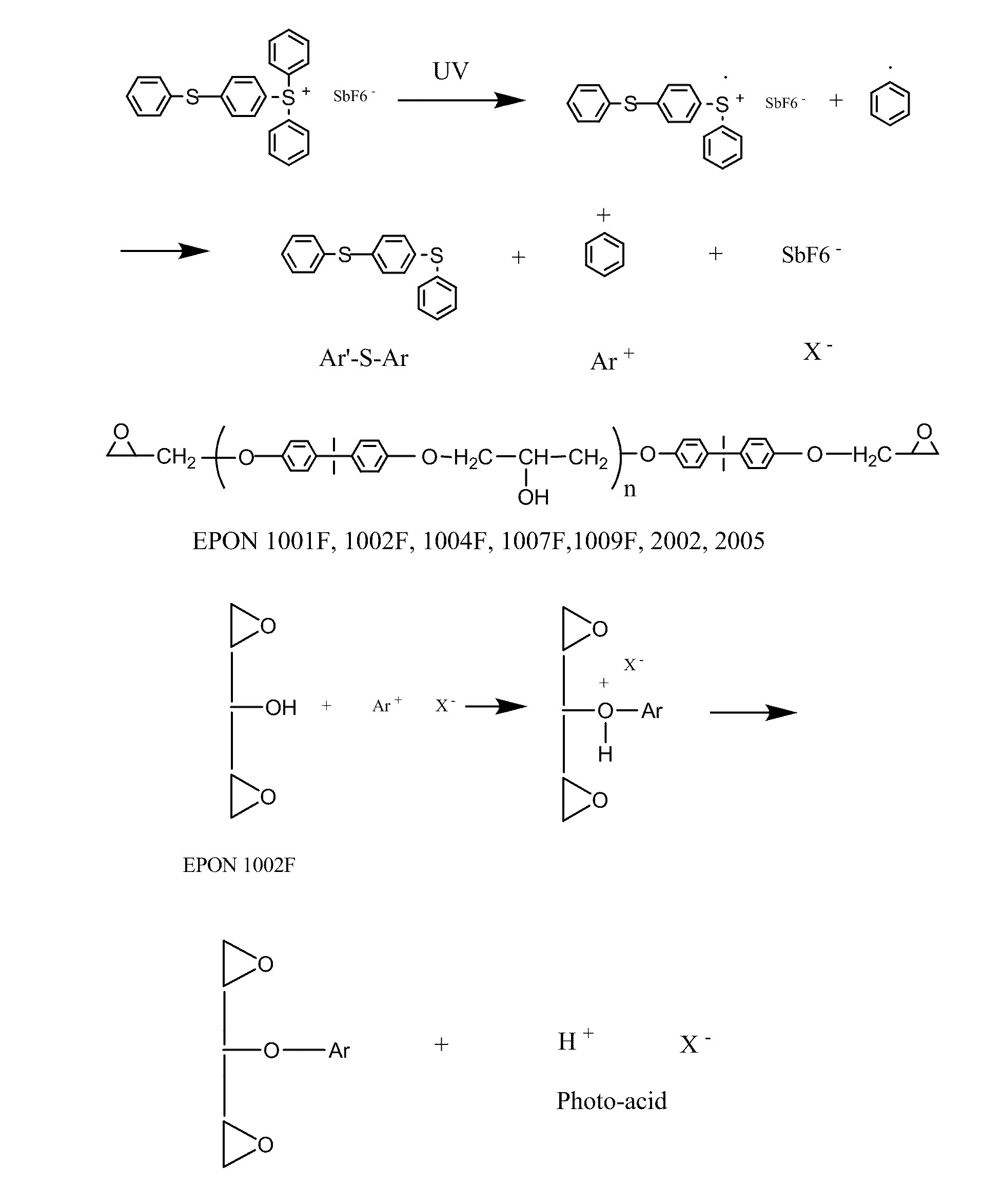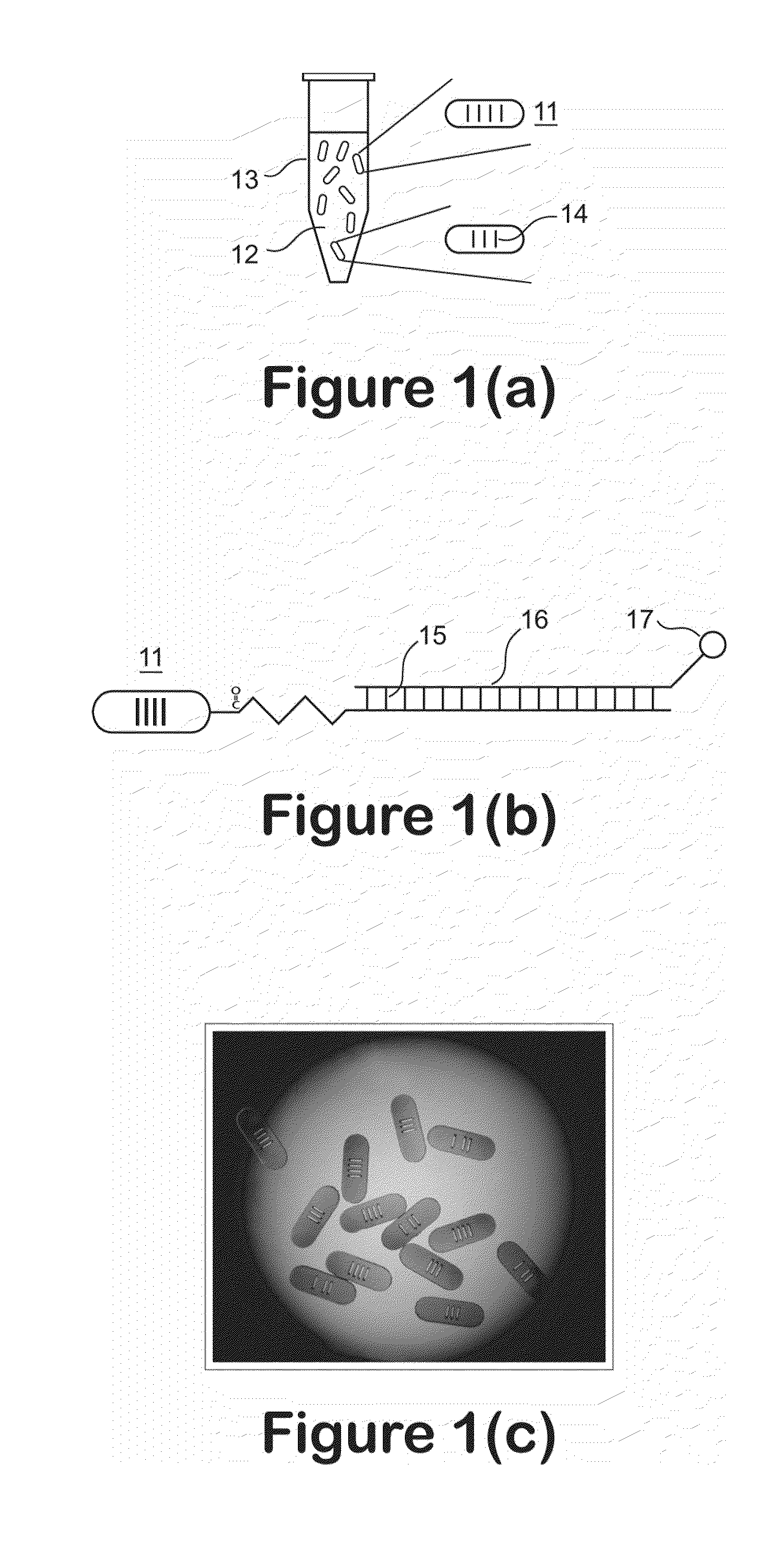Biocompatible and photocurable polymers
a biocompatible and photocurable technology, applied in the field of solid substrates, can solve the problems of insufficient sample amounts or non-uniform distribution over the chip surface, insufficient sample amounts or unsuitable mechanical contact printing, inability to detect barcodes, etc., and achieve the effect of rapid detection rate and rapid detection of fluorescence beads
- Summary
- Abstract
- Description
- Claims
- Application Information
AI Technical Summary
Benefits of technology
Problems solved by technology
Method used
Image
Examples
example 1
[0144]According to this example a control polymer solution was produced from the photoresist formulation of Table 1 and was cast onto clear polyester (mylar) film with 8-Path Wet Film Applicator. The film was dried in the ventilation hood for several hours, then further dried in forced ventilation oven at 45° C. for 30 minutes, then irradiated with UV (Stratalinker UV Crosslinker, Model 1800, 254 nm UV light bulbs, 8 watts each, power delivered ˜3000 μwatts / sqcm, total dose 300 mjoules / sqcm) for 100 seconds with or without photomask (4 in×4 in), then post baked at 65° C. for 3 minutes
[0145]
TABLE 1Photoresist formulation containing EPON SU-8 as controlComponent% by weightEPON SU-8 resin61.0Triarylsulfonium6.1hexafluoroantimonateCyclopentanone32.9Total100
example 2
[0146]According to this example a control polymer solution made from the photoresist formulation of Table 2 was cast onto clear polyester (mylar) film with 8-Path Wet Film Applicator. The film was dried in the ventilation hood for several hours, then further dried in forced ventilation oven at 45° C. for 30 minutes, then irradiated with UV (Stratalinker UV Crosslinker, Model 1800, 254 nm UV light bulbs, 8 watts each, power delivered ˜3000 μwatts / sqcm, total dose 300 mjoules / sqcm) for 100 seconds with or without photomask (4 in×4 in), then post baked at 65° C. for 3 minutes.
[0147]
TABLE 2Photoresist formulation containing EPON 1002F resin as controlComponent% by weightEPON 1002F resin61.0Triarylsulfonium6.1hexafluoroantimonateCyclopentanone32.9Total100
example 3
[0148]According to this example, acrylic acid was added into the photoresist formulation of Example 1 containing EPON SU-8 resin in different ratios (weight of acrylic acid / weight of photoresist solution=0.025, 0.05, 0.075, 0.1, 0.125). The resulting solution was cast onto clear polyester (mylar) film with 8-Path Wet Film Applicator. The film was dried in the ventilation hood for several hours, then further dried in forced ventilation oven at 45° C. for 30 minutes, then irradiated with UV (Stratalinker UV Crosslinker, Model 1800, 254 nm UV light bulbs, 8 watts each, power delivered ˜3000 μwatts / sqcm, total dose 300 mjoules / sqcm, for thicker film, double dose) for 100 seconds with or without photomask (4 in×4 in), then post baked at 65° C. for 3 minutes.
PUM
| Property | Measurement | Unit |
|---|---|---|
| diameter | aaaaa | aaaaa |
| diameter | aaaaa | aaaaa |
| thickness | aaaaa | aaaaa |
Abstract
Description
Claims
Application Information
 Login to View More
Login to View More - R&D
- Intellectual Property
- Life Sciences
- Materials
- Tech Scout
- Unparalleled Data Quality
- Higher Quality Content
- 60% Fewer Hallucinations
Browse by: Latest US Patents, China's latest patents, Technical Efficacy Thesaurus, Application Domain, Technology Topic, Popular Technical Reports.
© 2025 PatSnap. All rights reserved.Legal|Privacy policy|Modern Slavery Act Transparency Statement|Sitemap|About US| Contact US: help@patsnap.com



